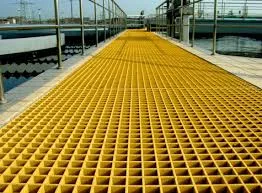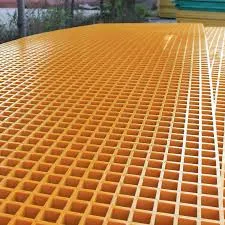
-
 Afrikaans
Afrikaans -
 Albanian
Albanian -
 Amharic
Amharic -
 Arabic
Arabic -
 Armenian
Armenian -
 Azerbaijani
Azerbaijani -
 Basque
Basque -
 Belarusian
Belarusian -
 Bengali
Bengali -
 Bosnian
Bosnian -
 Bulgarian
Bulgarian -
 Catalan
Catalan -
 Cebuano
Cebuano -
 China
China -
 China (Taiwan)
China (Taiwan) -
 Corsican
Corsican -
 Croatian
Croatian -
 Czech
Czech -
 Danish
Danish -
 Dutch
Dutch -
 English
English -
 Esperanto
Esperanto -
 Estonian
Estonian -
 Finnish
Finnish -
 French
French -
 Frisian
Frisian -
 Galician
Galician -
 Georgian
Georgian -
 German
German -
 Greek
Greek -
 Gujarati
Gujarati -
 Haitian Creole
Haitian Creole -
 hausa
hausa -
 hawaiian
hawaiian -
 Hebrew
Hebrew -
 Hindi
Hindi -
 Miao
Miao -
 Hungarian
Hungarian -
 Icelandic
Icelandic -
 igbo
igbo -
 Indonesian
Indonesian -
 irish
irish -
 Italian
Italian -
 Japanese
Japanese -
 Javanese
Javanese -
 Kannada
Kannada -
 kazakh
kazakh -
 Khmer
Khmer -
 Rwandese
Rwandese -
 Korean
Korean -
 Kurdish
Kurdish -
 Kyrgyz
Kyrgyz -
 Lao
Lao -
 Latin
Latin -
 Latvian
Latvian -
 Lithuanian
Lithuanian -
 Luxembourgish
Luxembourgish -
 Macedonian
Macedonian -
 Malgashi
Malgashi -
 Malay
Malay -
 Malayalam
Malayalam -
 Maltese
Maltese -
 Maori
Maori -
 Marathi
Marathi -
 Mongolian
Mongolian -
 Myanmar
Myanmar -
 Nepali
Nepali -
 Norwegian
Norwegian -
 Norwegian
Norwegian -
 Occitan
Occitan -
 Pashto
Pashto -
 Persian
Persian -
 Polish
Polish -
 Portuguese
Portuguese -
 Punjabi
Punjabi -
 Romanian
Romanian -
 Russian
Russian -
 Samoan
Samoan -
 Scottish Gaelic
Scottish Gaelic -
 Serbian
Serbian -
 Sesotho
Sesotho -
 Shona
Shona -
 Sindhi
Sindhi -
 Sinhala
Sinhala -
 Slovak
Slovak -
 Slovenian
Slovenian -
 Somali
Somali -
 Spanish
Spanish -
 Sundanese
Sundanese -
 Swahili
Swahili -
 Swedish
Swedish -
 Tagalog
Tagalog -
 Tajik
Tajik -
 Tamil
Tamil -
 Tatar
Tatar -
 Telugu
Telugu -
 Thai
Thai -
 Turkish
Turkish -
 Turkmen
Turkmen -
 Ukrainian
Ukrainian -
 Urdu
Urdu -
 Uighur
Uighur -
 Uzbek
Uzbek -
 Vietnamese
Vietnamese -
 Welsh
Welsh -
 Bantu
Bantu -
 Yiddish
Yiddish -
 Yoruba
Yoruba -
 Zulu
Zulu
Jan . 24, 2025 02:55
Back to list
chemical products for frp applications a comprehensive guide ...
Selecting the appropriate chemical products for FRP (Fiber Reinforced Polymer) applications requires a comprehensive understanding of both the materials involved and the specific environment in which these composites operate. FRP's appeal lies in its strength-to-weight ratio, corrosion resistance, and the ability to be custom-tailored for specific needs, making it an ideal choice in industries such as construction, aerospace, automotive, and marine. Here’s an expert guide to understanding and selecting chemical products for FRP applications.
The incorporation of UV stabilizers and antioxidants is critical in FRP applications exposed to direct sunlight or harsh weather conditions. Effective UV stabilizers prevent degradation and discoloration, extending the lifespan of FRP products. Silane coupling agents are another essential chemical category, improving bonding between the resin and fiber reinforcement, leading to improved mechanical properties and durability. Given environmental scrutiny and the push towards sustainability, choosing environmentally friendly chemical products is becoming a pivotal consideration. Water-based resins and bio-based formulations are emerging as sustainable alternatives for traditional petrochemical-based materials. These offer reduced environmental impact without sacrificing performance. True authority and trustworthiness in the selection of chemical products for FRP applications come from rigorous testing and validation. Ensure that the products meet industry standards and certifications. Consulting industry-standard references such as ASTM International and ISO can provide guidelines for the properties and performance metrics your chosen chemicals should meet. Collaboration with chemical suppliers who have a proven track record in FRP applications is invaluable. Their expertise in product formulation and customization can lead to improved product performance and innovation. They can assist not only in selecting the right chemicals but also in understanding the long-term effects of the chosen materials in specific environmental and operational conditions. In summary, optimizing chemical products for FRP involves a deep dive into the specific performance criteria required for your application. The intricacy lies not just in selecting the right resin and reinforcement but also in the complementary additives and post-processing treatments that together define the excellence of the FRP solution. With insights grounded in experience, expertise, authority, and trustworthiness, crafting the perfect FRP composite becomes not just a scientific endeavor but a strategic business advantage.


The incorporation of UV stabilizers and antioxidants is critical in FRP applications exposed to direct sunlight or harsh weather conditions. Effective UV stabilizers prevent degradation and discoloration, extending the lifespan of FRP products. Silane coupling agents are another essential chemical category, improving bonding between the resin and fiber reinforcement, leading to improved mechanical properties and durability. Given environmental scrutiny and the push towards sustainability, choosing environmentally friendly chemical products is becoming a pivotal consideration. Water-based resins and bio-based formulations are emerging as sustainable alternatives for traditional petrochemical-based materials. These offer reduced environmental impact without sacrificing performance. True authority and trustworthiness in the selection of chemical products for FRP applications come from rigorous testing and validation. Ensure that the products meet industry standards and certifications. Consulting industry-standard references such as ASTM International and ISO can provide guidelines for the properties and performance metrics your chosen chemicals should meet. Collaboration with chemical suppliers who have a proven track record in FRP applications is invaluable. Their expertise in product formulation and customization can lead to improved product performance and innovation. They can assist not only in selecting the right chemicals but also in understanding the long-term effects of the chosen materials in specific environmental and operational conditions. In summary, optimizing chemical products for FRP involves a deep dive into the specific performance criteria required for your application. The intricacy lies not just in selecting the right resin and reinforcement but also in the complementary additives and post-processing treatments that together define the excellence of the FRP solution. With insights grounded in experience, expertise, authority, and trustworthiness, crafting the perfect FRP composite becomes not just a scientific endeavor but a strategic business advantage.
Related Products
Latest news
-
Exploring the Benefits of Top Hammer Drifter Rods for Enhanced Drilling PerformanceNewsJun.10,2025
-
High-Precision Fiberglass Winding Machine for GRP/FRP Pipe Production – Reliable & Efficient SolutionsNewsJun.10,2025
-
FRP Pipes & Fittings for Shipbuilding - Corrosion-Resistant & LightweightNewsJun.09,2025
-
Premium FRP Flooring Solutions Durable & Slip-ResistantNewsJun.09,2025
-
Premium Fiberglass Rectangular Tanks Durable & Lightweight SolutionNewsJun.09,2025
-
Tapered Drill String Design Guide Durable Performance & UsesNewsJun.09,2025









